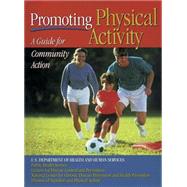
| A National Call to Action | vii | ||||
| Preface | ix | ||||
| Acknowledgments | xiii | ||||
| Introduction | xvii | ||||
| Part I Foundations for Physical Activity Promotion | |||||
|
3 | (12) | |||
|
4 | (2) | |||
|
6 | (2) | |||
|
8 | (4) | |||
|
12 | (3) | |||
|
15 | (26) | |||
|
16 | (3) | |||
|
19 | (13) | |||
|
32 | (4) | |||
|
36 | (5) | |||
| Part II Strategies for Changing Physical Activity Behavior | |||||
|
41 | (26) | |||
|
43 | (1) | |||
|
43 | (4) | |||
|
47 | (11) | |||
|
58 | (5) | |||
|
63 | (1) | |||
|
64 | (1) | |||
|
65 | (1) | |||
|
65 | (2) | |||
|
67 | (18) | |||
|
69 | (4) | |||
|
73 | (5) | |||
|
78 | (2) | |||
|
80 | (2) | |||
|
82 | (3) | |||
|
85 | (32) | |||
|
87 | (7) | |||
|
94 | (5) | |||
|
99 | (7) | |||
|
106 | (8) | |||
|
114 | (3) | |||
|
117 | (28) | |||
|
118 | (4) | |||
|
122 | (8) | |||
|
130 | (3) | |||
|
133 | (3) | |||
|
136 | (4) | |||
|
140 | (5) | |||
| Part III Strategies for Planning and Implementing Your Intervention | |||||
|
145 | (18) | |||
|
147 | (5) | |||
|
152 | (3) | |||
|
155 | (3) | |||
|
158 | (3) | |||
|
161 | (1) | |||
|
162 | (1) | |||
|
163 | (18) | |||
|
164 | (3) | |||
|
167 | (6) | |||
|
173 | (4) | |||
|
177 | (4) | |||
|
181 | (18) | |||
|
182 | (1) | |||
|
182 | (2) | |||
|
184 | (4) | |||
|
188 | (5) | |||
|
193 | (3) | |||
|
196 | (3) | |||
|
199 | (160) | |||
|
202 | (2) | |||
|
204 | (6) | |||
|
210 | (7) | |||
|
217 | (8) | |||
|
225 | (6) | |||
| Part IV Resources for Action | |||||
|
231 | (26) | |||
|
257 | (34) | |||
|
291 | (6) | |||
|
297 | (8) | |||
|
305 | (2) | |||
|
307 | (2) | |||
|
309 | (8) | |||
|
317 | (8) | |||
|
325 | (30) | |||
|
355 | (4) | |||
| Glossary of Physical Activity Terms | 359 | (4) | |||
| Glossary of Program Planning Terms | 363 | (4) | |||
| References | 367 | (13) | |||
| Index | 380 |
The New copy of this book will include any supplemental materials advertised. Please check the title of the book to determine if it should include any access cards, study guides, lab manuals, CDs, etc.
The Used, Rental and eBook copies of this book are not guaranteed to include any supplemental materials. Typically, only the book itself is included. This is true even if the title states it includes any access cards, study guides, lab manuals, CDs, etc.